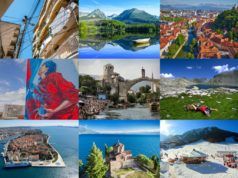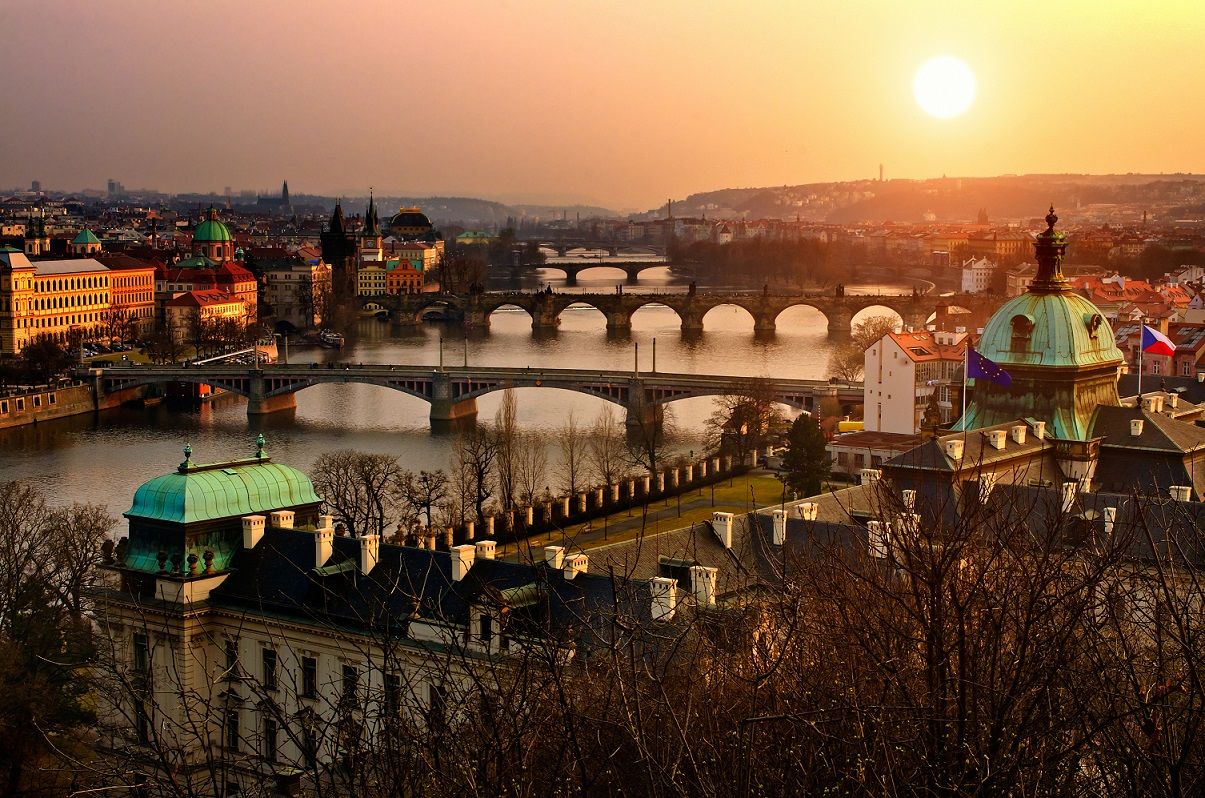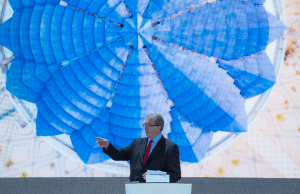CROSSROADS DALMATIA
Split is full of stories and myths. First of all, the classic clash between the north and south, between Zagreb and Split, Dinamo and Hajduk. Split reproaches Zagreb with claims of centralism and exploitation of the south.
The fact that Hajduk is more than just a football club with numerous fans, who stick with them even in times of drought, speaks volumes of the character of Split and its inhabitants.
[metaslider id=28520]
The city was formed as part of the ambition of one of the most important Roman emperors, Diocletian, born in nearby Salona. It can be compared to a sort of Dubai of its period, since Diocletian built his palace and urban plan to be a part of the world’s history as the new capital of the Roman province Dalmatia. The monumental architecture of the city and a number of important individuals give it a specific cosmopolitan character, occasionally blended with the rebellious spirit of its inhabitants. Maybe this explains the attachment of the inhabitants to their football club and the Split state of mind, wittily characterised by the late Dino Dvornik: “You may speak ill of me or of the whole world, but I never want to hear you speak ill of Split…” The Split spirit and energy are a fertile ground for excellent musicians, sportsmen and scientists.
What thrills tourists the most is the Mediterranean ambiance of the city with its street life and the famous riva, which functions as a public square, concert venue, night gathering place and the spot for all of Split’s important events.
[dropshadowbox align=”none” effect=”lifted-both” width=”900px” height=”” background_color=”#bed68b” border_width=”1″ border_color=”#dddddd” ]Split Cathedral Doors Celebrate 800 Years – We know that the doors were erected at exactly midday on April 23rd 1214 from a marginal note in the ‘Historia Salonitana’, a 13th century work covering the history of Split up to 1266, written by Thomas the Archdeacon. So at exactly midday on Wednesday, April 23rd, Split celebrated the 800th anniversary of the Cathedral doors with the opening of a special exhibition about them.[/dropshadowbox]
This rivalry between the capital and the provincial capital exists in all other European congress countries. Split was virtually non-existent in the meetings industry until a few years ago. In the battle with Opatija, Dubrovnik and other tourist places in Istria it got the short end of the stick. It was deemed as a more or less ‘transit’ meetings destination. There were numerous plans and ideas to build a congress centre. In 2007 there was talk of a project called ABC, which would combine an exhibition, business and congress centre. In 2008 the idea of a congress centre gained momentum, as the government supported investment analyses for four new congress centres in Zagreb, Opatija, Dubrovnik and Split. The centre would be located at the eastern part of the port of Split, on the site of the Dalmacijavino factory, with a 1,500 capacity plenary hall. Unfortunately the economic crisis put a halt to all of the projects.
[dropshadowbox align=”none” effect=”lifted-both” width=”900px” height=”” background_color=”#bed68b” border_width=”1″ border_color=”#dddddd” ]Dalmacija Wine Expo 2014 in Split – The Dalmatia Wine Expo 2014 continues to grow, to the satisfaction of its clients and visitors. The concept of the Expo has changed this year and the festival has been divided into two key segments: the business segment, which is to be held on 24 and 25 April 2014 at Radisson Blu Hotel in Split, and the so-called Wine & Fun days, held on 1 and 2 May 2014 on Kacic Square in Makarska.[/dropshadowbox]
Yet, everything changed completely with the arrival of large hotel chains a few years ago. The first was Hotel Le Meridien Lav in Podstrana near Split, which is the largest congress hotel in the city. Excellent service, international connections and know-how of the Starwood chain drew numerous international events to Split. The hotel is the flagship of the Dalmatian meetings industry and has received several prizes. It’s among the best in the Adriatic for functionality, and very appropriate for incentive groups and product launches due to its excellent additional services.
The second major hotel in Split was Radisson Blu Resort. The four star hotel with 240 rooms has a smaller congress centre, the largest hall accommodating 350 people and six smaller halls with ancillary services.
Atrium followed the foreign hotel chains and opened a hotel in 2007. The maximum capacity of the halls is 300 and additional services of the hotel are of a very high level. Smaller congress capacities are also available at Katarina, Park, Dalmina, Globo and President.
[dropshadowbox align=”none” effect=”lifted-both” width=”900px” height=”” background_color=”#bed68b” border_width=”1″ border_color=”#dddddd” ]10th Central European Orthopaedic Congress (CEOC) – Will be held in Split from 8th to 11th May.[/dropshadowbox]
The newest acquisition of the town, the Spaladium sports arena, can also potentially serve as a congress hall.
The city is also full of special venues for receptions and accompanying events. Among the traditional venues there is the Diocletian palace. Receptions can also be held at Prokurative square, the Croatian national theatre, Villa Dalmatia and numerous picturesque outdoor locations just waiting to host events. The restaurant scene is lively, as is the nightlife. In the last two years Split gained the reputation of being the party metropolis of the Adriatic and not just a transit destination on the way to the Dalmatian islands.
[dropshadowbox align=”none” effect=”lifted-both” width=”900px” height=”” background_color=”#bed68b” border_width=”1″ border_color=”#dddddd” ]Tour Diocletian’s Aqueduct Tunnels – These tunnels are one of the best preserved examples of ancient infrastructure, and there are plans to open them to visitors. The tunnels are 1.15 metres wide and 2.2 metres high, which makes them pretty comfortable for walking.[/dropshadowbox]
[pullquote]DID YOU KNOW?
That as A VALUABLE ARCHEOLOGICAL SITE Split and Solin, on the initiative of one of the founders of the science of archaeology, don Frane Bulić, hosted the 1st International Congress of Early Christian archeology in 1894. This congress awakened the interest of archaeological science in Europe.
[/pullquote]
The development of the meetings industry has encouraged the development of the agency segment. This occurred firstly through numerous DMC agencies and has been followed by a number of specialised incentive and team building service providers. Split offers a lot in a concentrated area, in terms of both the seaside and its inland area, that is not recognisable enough on the international market. Split is faced with the classic issue of many destinations, where the convention bureau is formally a part of the city tourist organisation and thus lacks international recognition. Split urgently needs a well organised and branded convention bureau.
The major disadvantage of the destination is air traffic access, although infrastructure has been improved with the renovation of the airport platform and will further gain from the planned construction of a new terminal, equipping the airport to be able to receive up to 2 million passengers annually.
Air transport is mostly an issue in the low tourist season, which is at the same time high congress season. This element of an attractive destination is the main one preventing Split from becoming an excellent congress destination. Split is the diamond amongst the coal.
[metaslider id=28528]
Destination mark: 3,98 – QUALITY MEETINGS DESTINATION
Marks:
5 excellent meetings destination
4 quality meetings destination
3 recommendable meetings destination
2 average meetings destination
1 passable
Individual marks:
A. Natural and cultural factors: 4.35
The mild climate, lively atmosphere, historical attractions and architecture are the main advantages of destination Split. Its disadvantage is the attitude towards the environment and sustainable development.
B. General and transport infrastructure: 3.98
With the completion of the motorway Split has an excellent connection to the continent. Air and rail accessibility is steadily improving. The downside is local traffic infrastructure with public transportation as well as communal infrastructure.
C. Tourism infrastructure: 4.45
Tourism infrastructure has improved immensely in the last few years. Even before that Split was well equipped with sports venues and leisure offers. Split is the cultural centre of Dalmatia. The progress of the hotel scene is making great strides.
D. Congress infrastructure: 4.12
Congress hotels, professional services, ongoing development and a variety of congress products are a strong part of the offer. On the downside are its congress history and references as well as the number of hotel rooms appropriate for congresses, the weakest link being the lack of a convention centre in Split.
E. Subjective assessment: 4,16
Political stability, safety, ratio of quality to price and general competitiveness of the destination are the main attributes of Split’s offer. Split does somewhat worse in the area of meetings industry support, e-services and the image of Split as a congress destination.
[metaslider id=28536]
Comparison to the Region:
Among the Adriatic congress destinations Split has become serious competition to Dubrovnik in the last years. The main disadvantages of the destination are bad cooperation between the service providers, lack of air traffic connections to key markets and not enough destination marketing. If Split gets a real convention centre in the future it could become one of the leading congress destinations in the Mediterranean. New and excellent hotel capacities, good road connections to Europe and wonderful surroundings, with islands offering numerous incentive programme opportunities, all bolster this proposition. Split is one of the most unexploited congress destinations in the Mediterranean.
Cool meetings:
HEART OF DALMATINSKA KUHINJA: Characteristic of Dalmatian coastal cuisine is its digestibility and simple preparation. The secret of the fabulous taste of fish, meat, or other cooked dishes lies right in that. Yet the idea that simplicity means everyone everywhere could prepare them would be deceiving. The tradition of grilling and roasting fish and delicacies of the sea in this region has been carried on from generation to generation, whereby the proper grilling technique often depends on the type of wood or wood briquettes chosen to do the grilling. In addition to this come the tantalizing Dalmatian olive oil, grilling technique, and the particular taste of the fish and delicacies of the sea.












